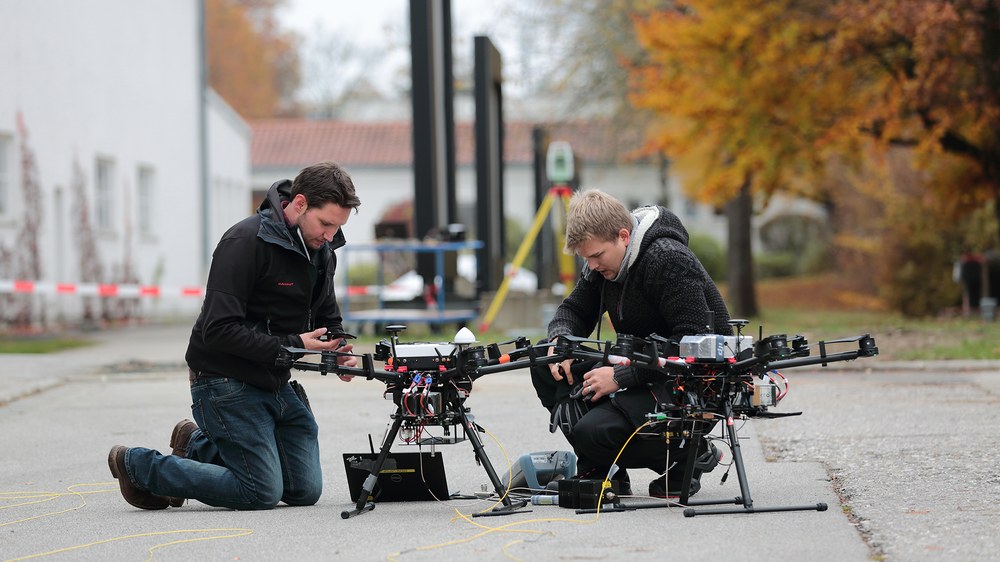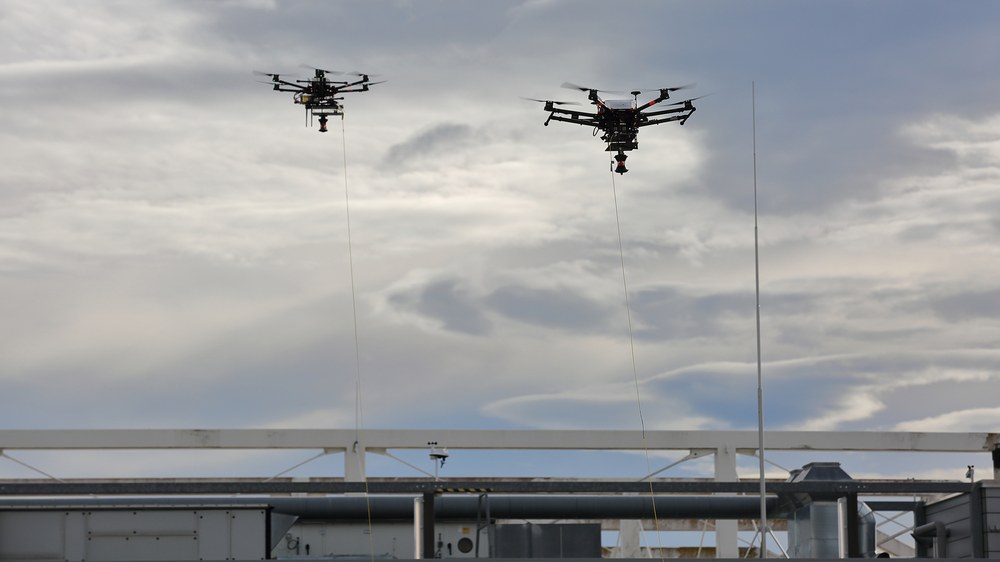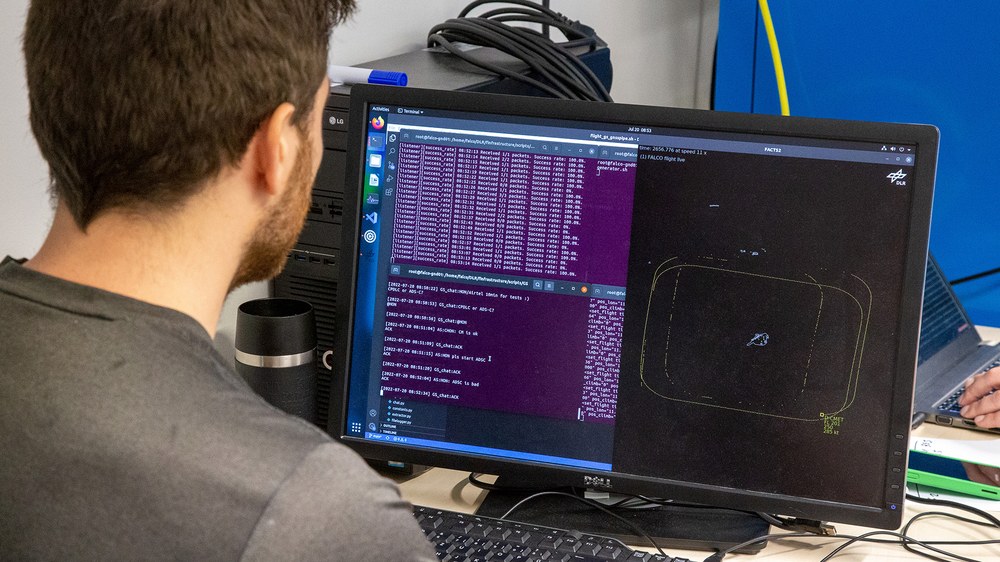Research highlight LDACS - Communication for aviation
With LDACS, we are setting new standards for digital terrestrial aeronautical radio in aviation and enabling an efficient, powerful and safe air traffic system of the future.
The Aeronautical Communications group designs digital radio and surveillance systems for civil aviation and urban air transport. Applications for these systems include air traffic control (ATC), air traffic management (ATM), airline operational control (AOC), as well as control and monitoring of unmanned aerial systems (UAS) and their integration into the civil airspace (UAS traffic management, UTM).
One focus of our current work is the standardization and validation of the future global aeronautical radio system in the L-band LDACS (L-band Digital Aeronautical Communications System) for communication between controllers on the ground and pilots in the aircraft. As a high-performance and cyber-secure data link, LDACS enables modern ATM procedures that significantly increase the efficiency and safety of air traffic management. The technical developments for LDACS have been largely completed and were led by DLR. Currently, LDACS is undergoing the ICAO standardization, which is also led by DLR. In addition, an LDACS test network will be established in the next few years with the support from the LuFo project PaWaDACs. The test network will be used for LDACS validation in pre-operational operations. The LDACS communications system can also be used to provide backup navigation and surveillance services. The further development of LDACS into an integrated CNS system (Communications, Navigation, Surveillance) is therefore another key topic in the research group.
As part of the future LDACS development, the potential of employing multiple antenna systems is also being evaluated, in particular the extent to which the robustness and performance of the LDACS Air-to-Ground (A/G) system can be improved as a result. Another focus of the research group is to extend the LDACS system such that to also allow for direct air-to-air (A2A) communication and surveillance. For this purpose, appropriate concepts and transmission methods are being developed and a complete LDACS A2A data link will beproposed. After validation in computer simulations with realistic communication channel models, LDACS A2A prototypes will be developed and demonstrated in flight campaigns. In addition to communications, cooperative and non-cooperative surveillance concepts also represent a significant part of the LDACS advancements. Here, the LDACS communications signals are used as "Signals of Opportunity'' and novel surveillance concepts are being developed. These enable the possibility to use the existing LDACS signals and/or their reflections off the aircraft for passive surveillance purposes. On the one hand, an LDACS-based non-cooperative multistatic radar concept is developed while on the other hand an LDACS-based cooperative "Wide Area Multilateration" (WAM) approach is considered.
Digital radio systems are being investigated and developed for the safe integration of highly automated or autonomous drones in the urban airspace. The novel DroneCAST (Drone Communications and Surveillance Technology) communication and surveillance system is envisioned to enable robust, efficient, and direct data exchange between all airspace participants. The development of DroneCAST is based on communication channel findings obtained in a comprehensive measurement campaign with hexacopters in an urban environment at the Oberpfaffenhofen site. The resulting channel model is used in computer simulations to validate the system design. In the near future, a first prototype will demonstrate the performance of DroneCAST. (Image right: DLR)
Since the application profiles of classic drones in urban areas and larger unmanned (cargo) aircraft are very different, additional research is being conducted on a communication system for unmanned aerial vehicles called CDACS (C-band Digital Aeronautical Communications System). Although it is expected that unmanned aerial vehicles will have a comparatively high degree of autonomy, a reliable data link is still necessary for the exchange of information between remote pilots and the aircraft. Since the requirements for reliability, data integrity as well as authenticity essentially increase with the increasing autonomy of a system, a special focus is placed here on the CDACS development.Thus, not only cyber security plays a major role, but particular attention is also paid to the robustness of the waveform used, especially with respect to interferers.
The "Aeronautical Communications" group is active in various bodies, including as a member of the "Future Communications Infrastructure Task Force" (FCI-TF) of Eurocontrol, as an advisor to DFS in the "Communications Panel" and the "Navigation Systems Panel" of ICAO, as well as in the Internet Engineering Task Force (IETF).
Data link Design (LDACS A/G and A2A, CDACS, DroneCAST)
OFDM-based system design
OFDM receiver optimization
Interference cancellation methods
Coding
Synchronization
Coexistence with existing CNS systems
Robust communication and security at the physical layer
Robust and efficient access methods, especially in self-organizing networks
Efficient procedures for airborne surveillance
Channel modelling
Air-to-Air (A2A) channel model
Air-to-Ground (A/G) channel model
Drone-to-drone (D2D) channel model
Surveillance concepts
LDACS-based passive non-cooperative multistatic radar approach
LDACS-based passive cooperative WAM approach
DroneCAST active cooperative surveillance system



More information on www.LDACS.com
